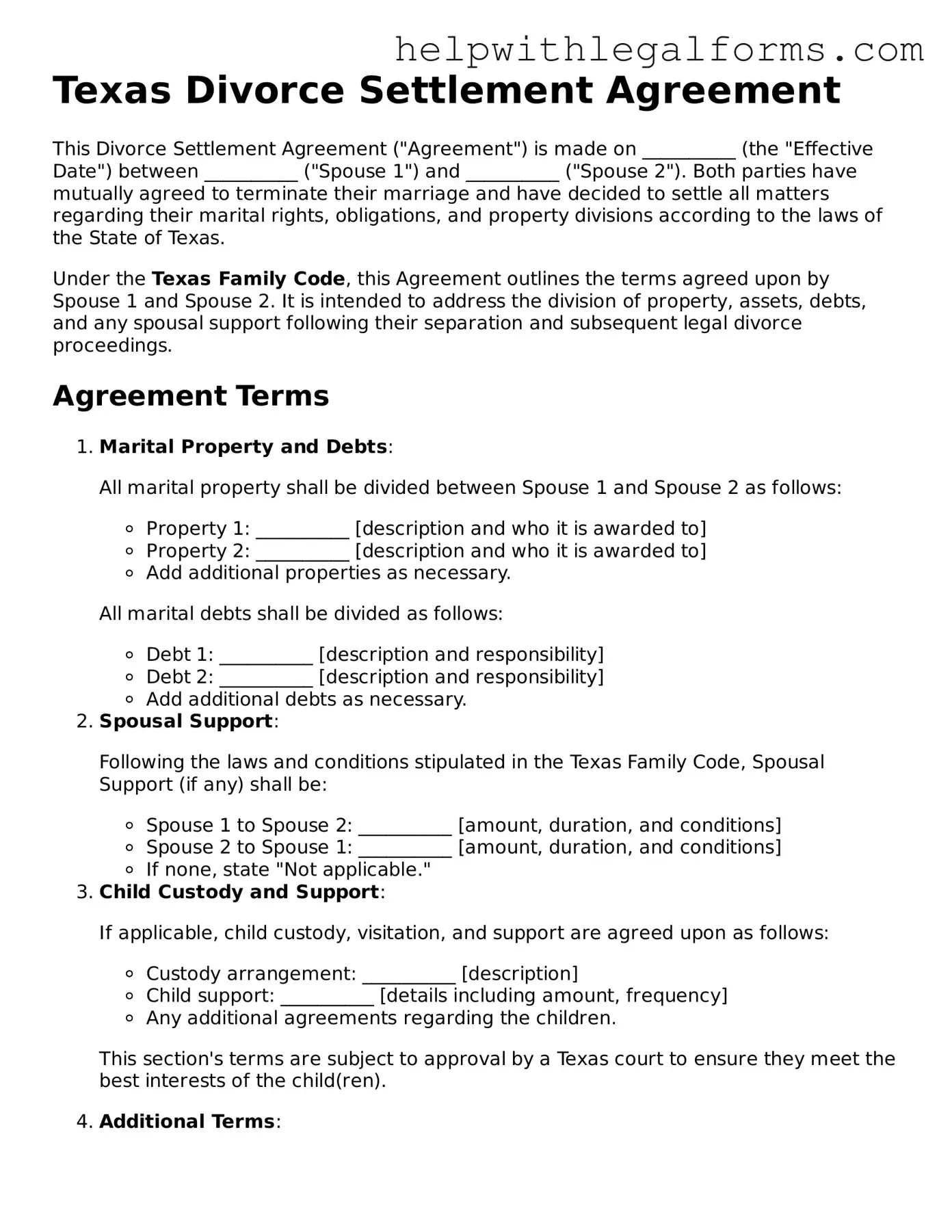What is a Texas Divorce Settlement Agreement?
A Texas Divorce Settlement Agreement is a legally binding document that outlines how both parties in a divorce have agreed to divide their marital assets and debts. It also covers child custody, support, and visitation arrangements if applicable, along with any alimony agreements. This agreement is a crucial step in the divorce process, as it details the rights and responsibilities of each party post-divorce.
How do you file a Divorce Settlement Agreement in Texas?
To file a Divorce Settlement Agreement in Texas, both parties must first reach an agreement on all relevant issues. Once the agreement is drafted and signed by both parties, it must be submitted to the court. The agreement is then reviewed by a judge during the final divorce hearing. If the judge finds the agreement fair and in accordance with Texas law, they will typically approve it, making it an official order of the court.
Is a lawyer needed to create a Divorce Settlement Agreement in Texas?
While it is not required to have a lawyer to create a Divorce Settlement Agreement in Texas, it is highly recommended. A lawyer can help ensure that the agreement is legally sound and that both parties' rights are protected. They can also offer valuable advice on complex issues such as property division, child support, and custody arrangements. However, some individuals choose to draft their agreement without legal assistance, especially in uncontested divorces where both parties agree on all terms.
Can a Divorce Settlement Agreement in Texas be modified after it is finalized?
Yes, a Divorce Settlement Agreement in Texas can be modified after it is finalized, but only under certain conditions. Modifications to child support, custody, or visitation require showing a significant change in circumstances. To modify alimony or division of property, there needs to be a provision within the agreement allowing for such changes, or both parties must agree to the modification. Any changes must be approved by the court to be legally valid.
What happens if one party does not follow the Divorce Settlement Agreement?
If one party fails to follow the Divorce Settlement Agreement, the other party has the option to file a motion with the court to enforce the agreement. The court may then order the non-compliant party to comply and potentially face legal consequences such as fines or, in extreme cases, jail time. It is essential for both parties to understand and adhere to all terms of the agreement to avoid such legal actions.
Are all assets and debts divided equally in a Texas Divorce Settlement Agreement?
Not necessarily. Texas is a community property state, which means that all assets and debts acquired during the marriage are considered owned equally by both spouses. However, the division of these assets and debts in a Divorce Settlement Agreement does not have to be exactly equal but must be fair and just. Factors such as each party's earning capacity, fault in the divorce, custody of children, and others may influence the division of assets and debts.
